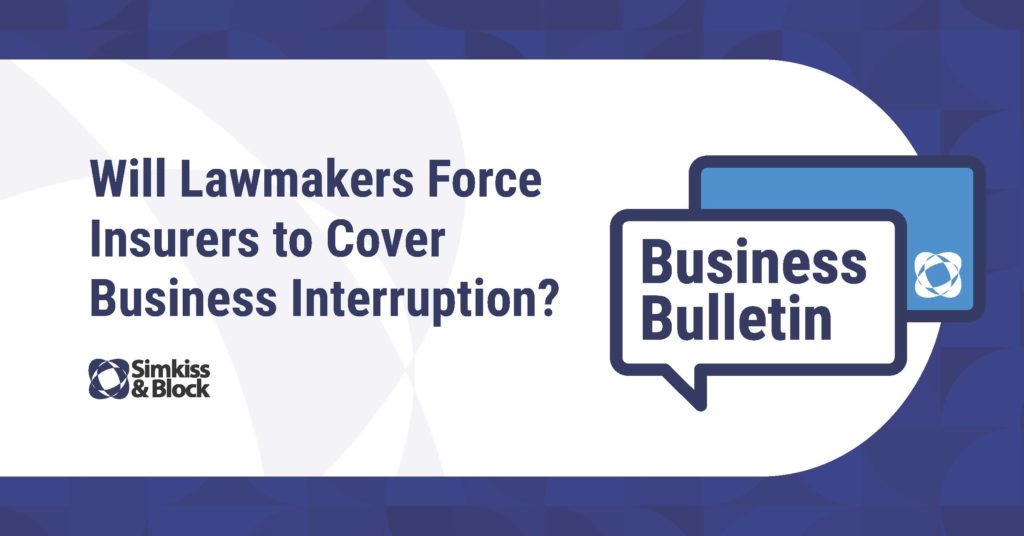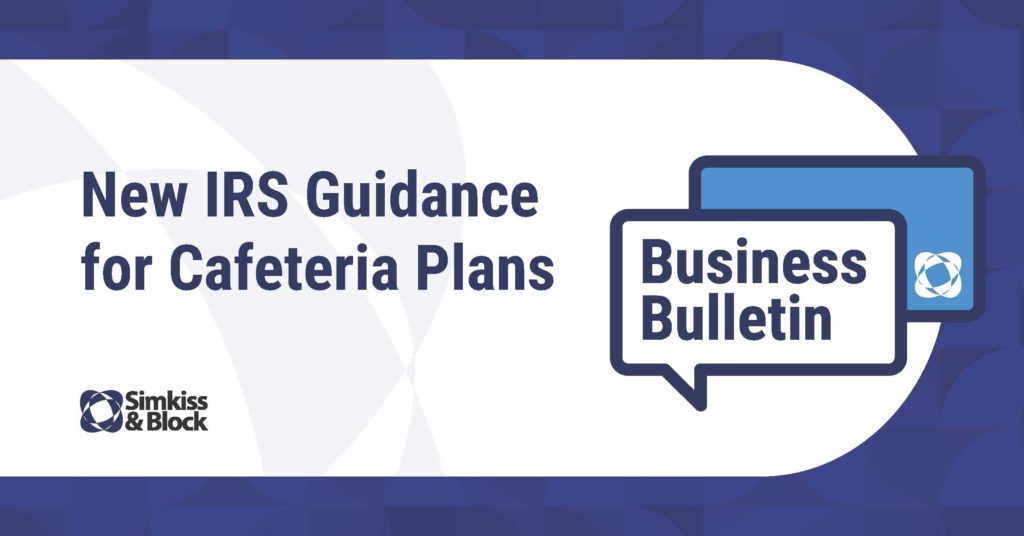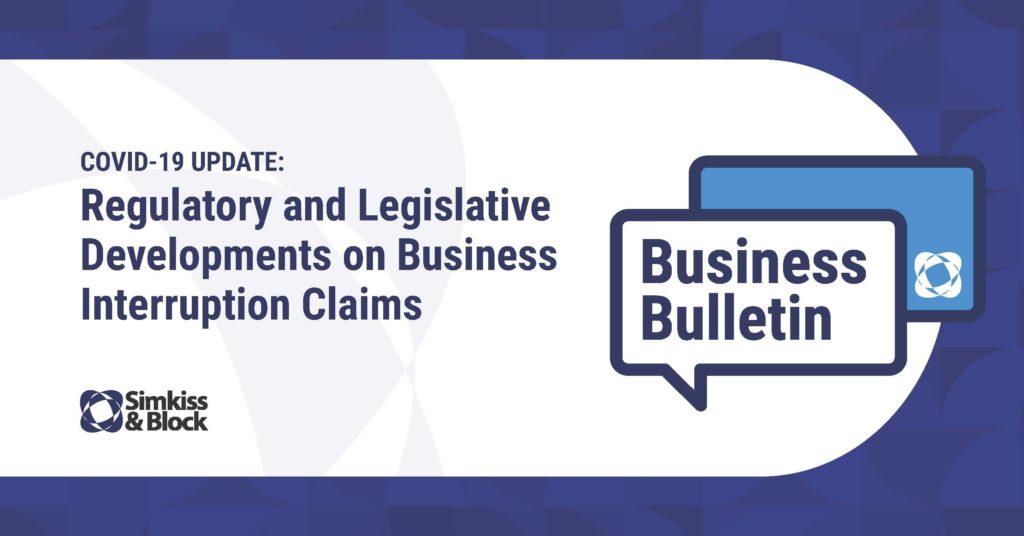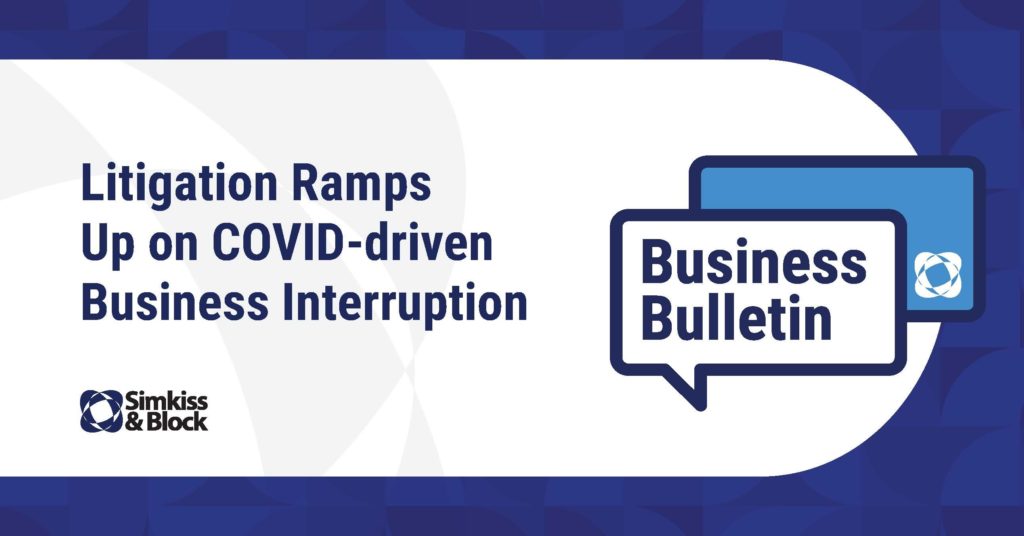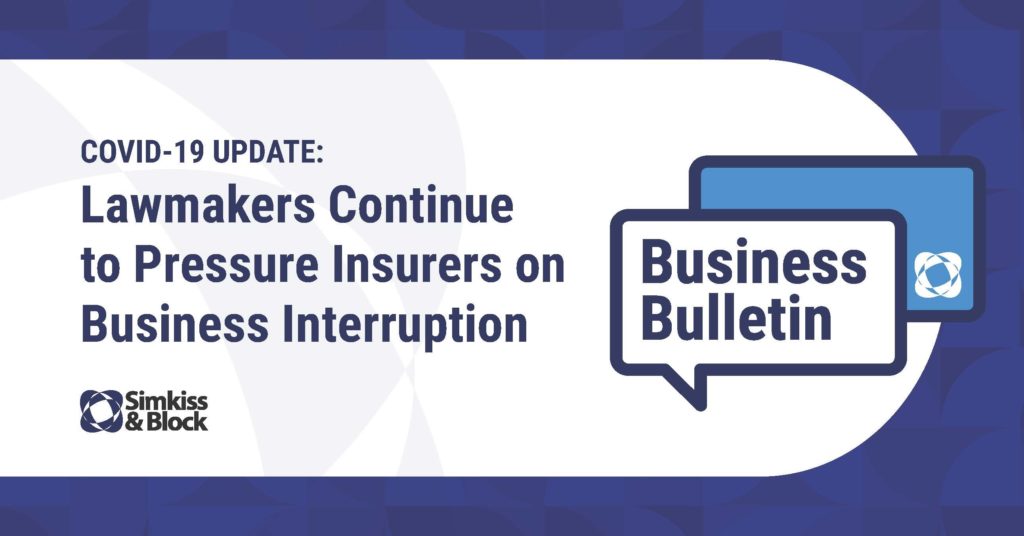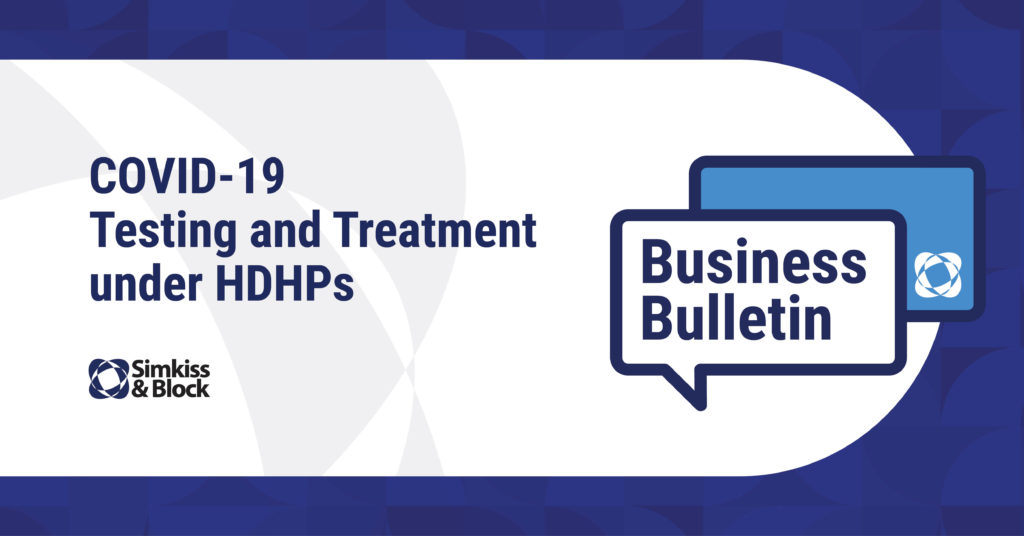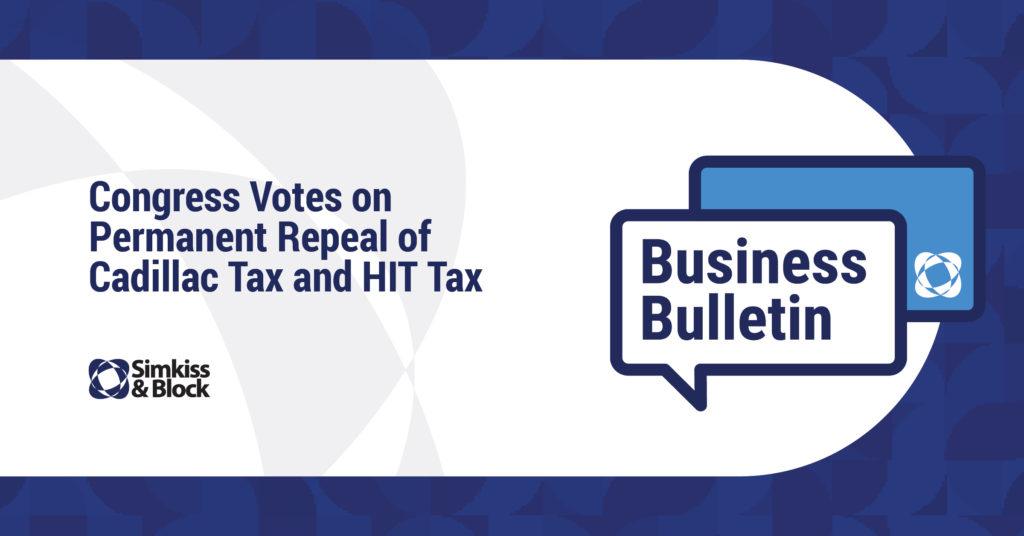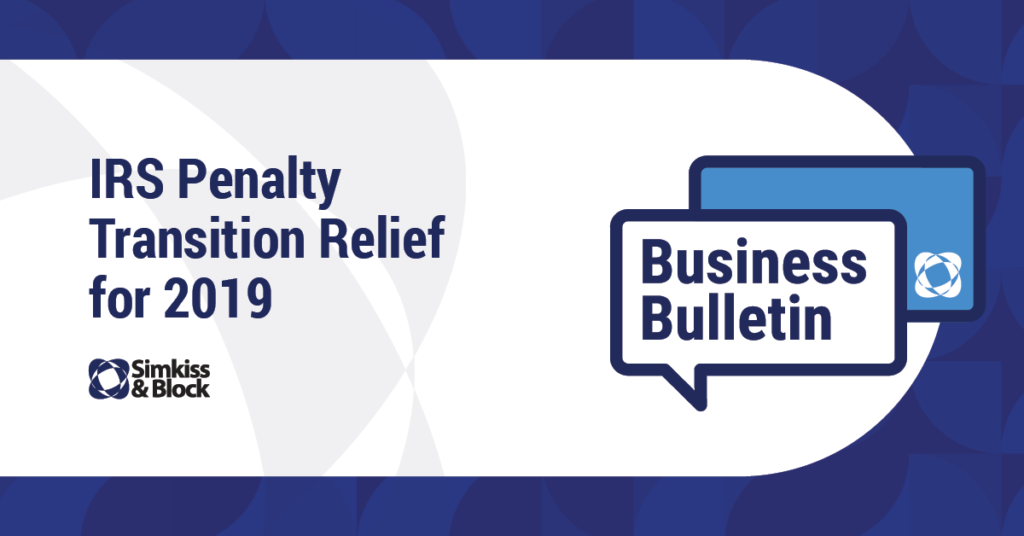Many policyholders whose business has been shut down or otherwise impaired were disappointed to hear that the vast majority of Commercial Business Interruption policies are not triggered to pay in the absence of physical damage to their property having caused the interruption. In mid-March, a few states (New Jersey, Ohio and Massachusetts most notably) drafted legislation proposing to force insurers to pay these claims. Unsurprisingly, lobbyists and attorneys of all kinds are circling the issue aggressively given the potential dollars involved. Here are a few of the issues/nuances in play around these discussions:
- Discussions of how parties would like the insurance company to pay for business interruption range from forcing insurers to pay claims with their own funds regardless of policy terms, to using them primarily as a facilitator of these claims subject to reimbursement through a special assessment, to forcing insurers to pay with some of their own “skin in the game” subject to a Federal backstop program somewhat akin to TRIA, the Federal terrorism reinsurance backstop created after 9/11.
- To vastly oversimplify somewhat complicated position statements, the industry’s general response to this has been that not only is it imprudent and economically impractical to force insurers to pay claims that their products were clearly not designed or priced to pay, but that it is likely unconstitutional for legislators to interfere with and override unambiguous private contracts like insurance policies.
- Some of the insurance industry concerns about the legislative proposals which would see them reimbursed for these claims include issues like: (a) the volume of these claims would likely overwhelm their infrastructures which were not built or staffed for the work and cost involved in this; (b) since their policies were never written to cover these issues, their staff has no training on how to adjust such claims; (c) without more guidance than legislators will probably be able to provide, the administering and policing of these claims is likely to be widely inconsistent since there is no precedent and no policy language to follow as there are for all other claims; (d) their claims payment reserves and resources aren’t funded at levels that enable them to pay these massive unanticipated claims up front and then seek government reimbursement later, etc.
- Some of the concerns about the ideas that would have them pay with some “skin in the game” subject to a Federal backstop were pretty well articulated by one executive who offered the following:
“The lost business here is in the trillions. To size that, I think that the total 9/11 losses were around $40B (in 2001 dollars). The TRIA program put into place has a total liability cap for government and insurer TRIA losses of $100B. If losses exceed that amount, then everyone gets paid pro rata. So if there are $1 trillion in losses, everyone would get 10 cents on the dollar. Total commercial insurance premiums in the U.S. are somewhere in the $250-300 billion per year range. Current projections are that we are really going to need $5 trillion in federal relief. So you would have to dedicate 20 years of premiums to pay for this loss. And the industry already runs on a loss ratio that does not leave much in profit after all of the normal course claims are paid. So how do you fashion an industry skin in the game program with all of that in play?”
On the Bright Side
One area in which there has been relatively easier agreement has been in terms of whether insurers will accommodate some flexibility on the timeliness of premium payments by policyholders. As of this writing in early April, upwards of 40 states had made pronouncements on this topic with only a few states mandating specific action/inaction by insurers. Instead, most states are making it known that their regulators will be watching closely for insurer cooperation but for now are using softer language such as “encouraging,” “requesting,” or “urging,” insurers to work with policyholders to avoid the cancellation of their insurance policies.
In more recent weeks, the debate about how best to aid impacted businesses and what role the insurance industry should or should not play in that process has shifted more to a Federal level. Even as the $2.2 trillion CARES Act (Phase 3 of stimulus) was being finalized two weeks ago, our eyes and ears on the Hill were reporting that there was growing acceptance that Phase 4 would probably be necessary in the not too distant future. However, the fight to get Phase 3 completed was so acrimonious, there was a lot of fatigue that needed to subside before productive debate could begin about another package. Remember also that right around that same time, numerous legislators/lobbyists/staffers/etc. tested positive so Congress was eager to recess for a month.
The proposal we hear gaining the most traction for the next phase of assistance for impaired businesses is the establishment of a massive relief fund, to be overseen by a “special master” in the mold of the 9/11 victim compensation fund, and that the claims be administered by contracted experts from any number of industries, potentially but not necessarily including insurance. A long list of well connected and respected trade associations, most of whom represent parties who are insurance buyers/policyholders, jointly authored a letter to the Executive Branch last week advocating for the development of this “Business and Employee Continuity and Recovery Fund,” which we understand to be gaining wide scale acceptance on both sides of the issue and both sides of the aisle, as the most fair and efficient mechanism to fund the next phase of business recovery. If all the interested parties can rally around one proposal that would be fabulous news.
Further Considerations
If all the interested parties can rally around one proposal that would be fabulous news. Some potential issues which might indicate this is a bit farther rather than closer to becoming reality include:
- Although this Recovery Fund concept is said to have quickly garnered broad and deep appeal from many parties, other things we are hearing such as that the groups leading this effort are still trying to determine who would be their best champions (presumably authors) for this on the Hill, would seem to indicate it is still subject to lots of further discussion and potential change.
- Congress has recessed until late April, and many members are privately indicating they may be reluctant even then to come back and get in the usual mix since numerous participants to the process have tested positive. This may be partially offset by the political dynamic that, given how contentious the debate around Phase 3 became, some members might want to take the opportunity to seize the reins and jump in early (“grab the pen”) while others stay away.
- Perhaps the most substantial challenge to getting a huge Recovery Fund like the one being advocated for in the next Phase is that others are already lining up with their own massive proposals—President Trump wants $2 trillion for infrastructure, Speaker Pelosi wants broad student loan forgiveness and other items, industry groups like health care providers are pushing for their own direct support and likely many more will line up in coming days/weeks.
Simkiss & Block and the various industry groups in which we participate will continue to make ourselves part of the debate so that we can advocate for our clients in the most effective ways possible and bring the latest updates to our stakeholders. Please feel free to contact us at any time for a discussion of how these proposals might be most applicable to your business.

